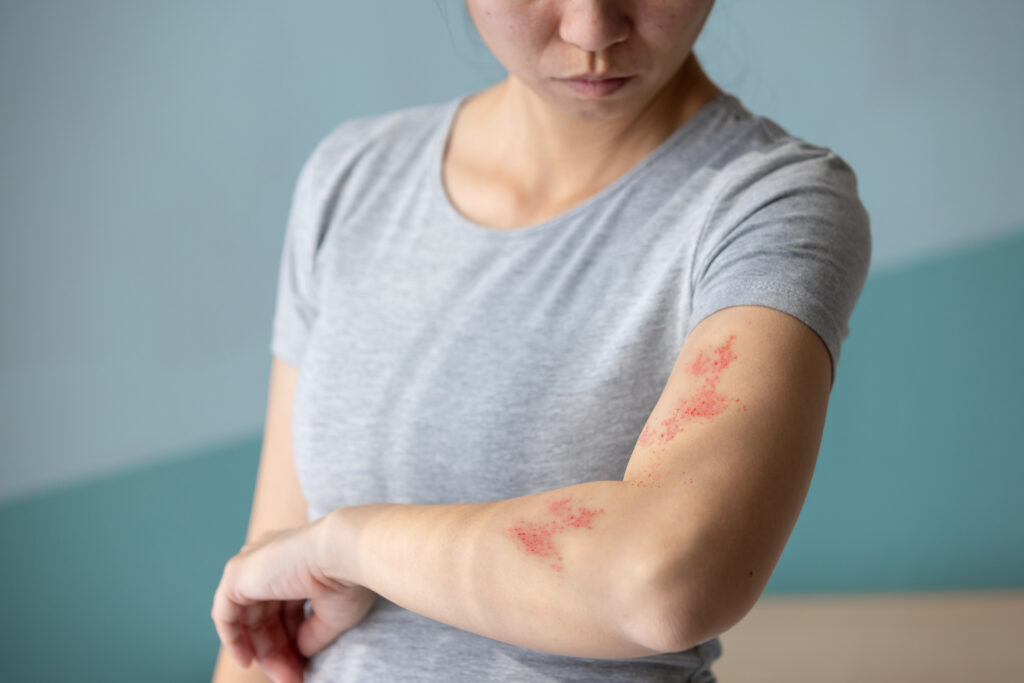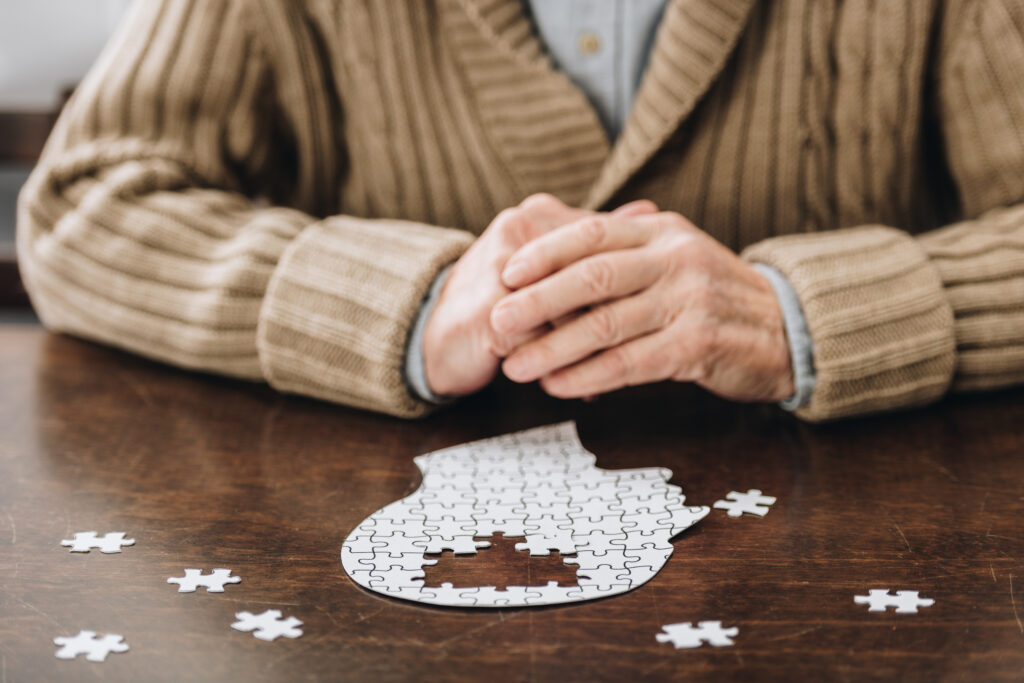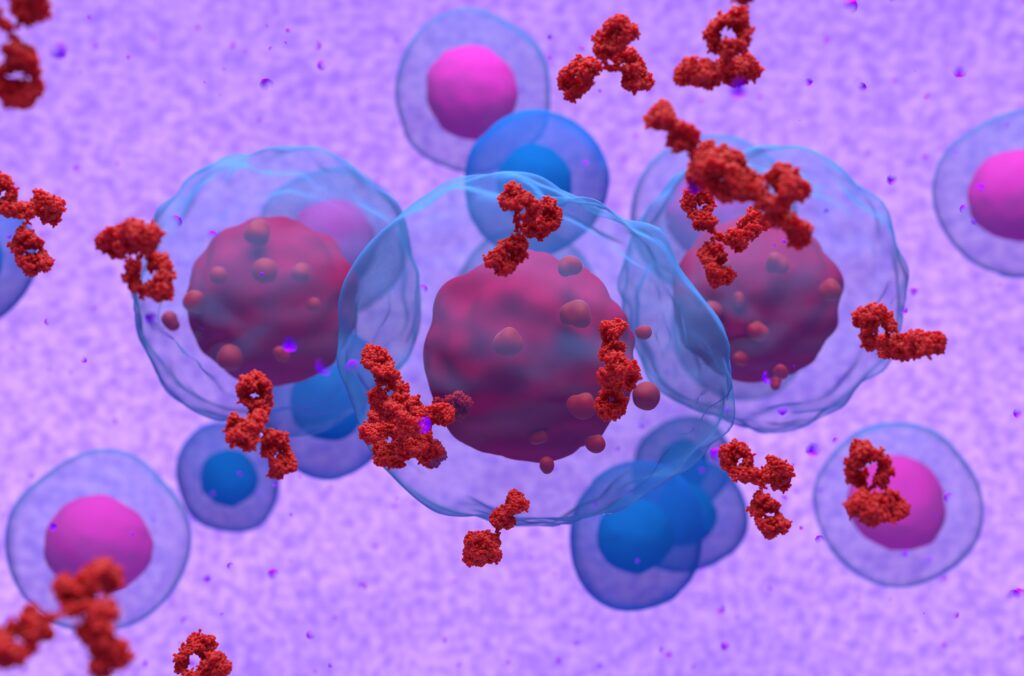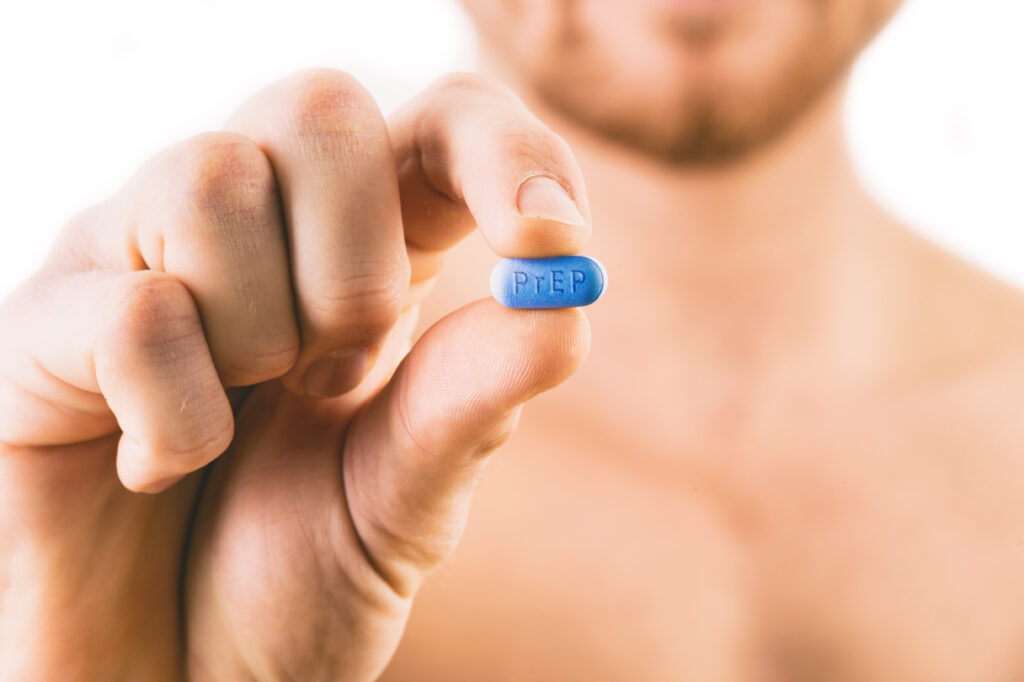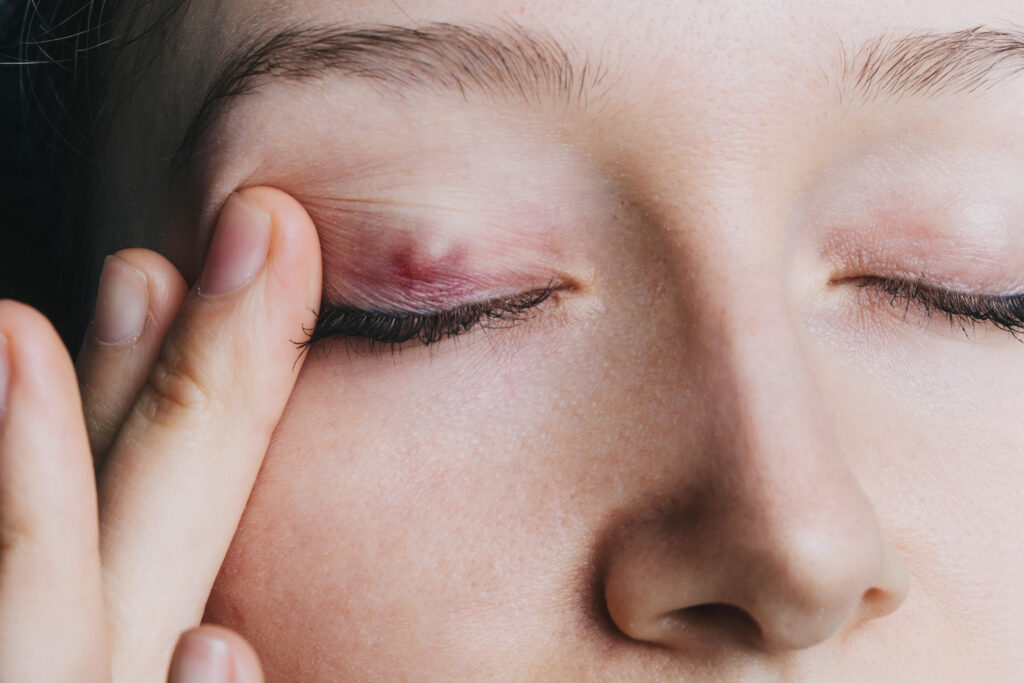
A stye is a red bump on the edge of your eyelid that is painful and looks somewhat similar to an acne pimple. It forms when an oil-producing gland in your eyelid or eyelash follicle gets blocked, attracting bacteria that cause an infection. Styes are very common in people of all ages, though adults tend to get them more often due to increased oils in the skin that can block glands.
The two most common bacteria that cause styes are Staphylococcus aureus and Staphylococcus epidermidis. There are also two different types of styes: external and internal. External styes form on the outer part of your eyelid, often because of a clogged hair follicle. Internal styes form in the inner part of your eyelid, typically due to an infection in the interior eyelid gland that produces the oils to keep your eye moist.
What Does a Stye Look and Feel Like?
The most apparent symptom of a stye is the red bump that starts forming on your eyelid near your lashes. Sometimes, it can have a yellowish center. Other symptoms include:
- Light sensitivity
- Swelling of the eyelid
- Itching
- Soreness
- Eye tearing
- Crusting along the eyelid
- Feeling like there’s something in your eye
Some people feel a gritty and scratchy sensation in the eye, especially with internal styes. Internal styes can block the oil glands that keep your eye moist, so those with internal styes often experience dry eyes.
Although anyone can develop a stye, it occurs more frequently in people who wear contact lenses and don’t wash their hands before touching their eyes. It is also more common in people who forget to remove makeup since it can block the oil glands and allow bacteria to grow.
People with diabetes and other conditions that weaken the immune system also tend to have more styes.
Styes are not generally contagious, but if you touch the stye, bacteria can stay on your hands and potentially affect your other eye.
Treating Styes: Getting Relief From Discomfort
Styes tend to go away on their own within one or two weeks. You can help the process by applying warm compresses to the affected eyelid for 10 to 15 minutes, anywhere from three to five times daily.
You may also want to try green tea bags soaked in warm water. Green tea leaves have antimicrobial and antioxidant properties that can support eye health. Some people swear by green tea compresses for styes and other eye conditions.
To clean the eyelid, you can use a mild shampoo, like those made for babies, and warm water. There are eyelid wipes available at various stores that are mild enough for use with a stye, too.
Remember never to pop or squeeze a stye, and refrain from wearing makeup or contact lenses until the stye is gone.
If the pain and inflammation worsen after 48 hours of treating the stye, it’s best to turn to your eye care provider. They can drain the stye using a small incision and local anesthetics or prescribe an antibiotic ointment or drops to help the area heal.
If the swelling is severe, your provider can also give you a steroid injection.
Preventing Styes
It’s not always possible to prevent styes, but practicing good facial hygiene helps. You will want to ensure you always wash your hands before touching your face, especially your eyes.
If you wear contact lenses, wash your hands before putting them in or removing them. Clean the contact lenses with the appropriate cleaning solutions, and dispose of the contacts on the schedule your provider recommends.
It’s also important to wash your face before bed and remove any makeup you have on. Never share eye makeup with anyone else, and make sure to throw away eye makeup about every three months.
Managing Styes
If you’ve developed a stye, one of the first things you may think to do is try to disguise it with makeup. However, leaving your stye uncovered is essential, except for any antimicrobial creams prescribed by your provider.
The good news is that by keeping your face clean and washing your hands often, you can reduce the chances of developing uncomfortable styes. While this practice is especially important for those with compromised immune systems, it’s also a good habit for everyone to adopt.
Resource Links
- “Stye” via National Library of Medicine
- “Styes and chalazia (inflammation of the eyelid)” via National Library of Medicine
- “A Comprehensive Overview of Skin Complications in Diabetes and Their Prevention” via National Library of Medicine
- “Antimicrobial properties of green tea catechins” via National Library of Medicine

